
Now that I've gotten through the gauntlet of massive AAA releases like Metal Gear Solid V and Dark Souls III, I wanted to take some time to clear out some smaller games that have been collecting dust in my Steam library before diving into any other massive, time-sucking games. One of my highest priorities was the Indie sci-fi horror title Soma, developed by Frictional Games - the same company that made Amnesia: the Dark Descent. I had heard pretty good things about this game, and I liked Dark Descent, so I was eager to finally have a chance to dive into this one.
Learning from failures and forgetting successes
Soma show signs of learning from the weaknesses of both The Dark Descent and A Machine for Pigs (which was actually developed by a third party), even though it still doesn't necessarily nail the mechanics this time either. It's a far better experience than Machine for Pigs, and shows the level of quality that helped make Dark Descent such a hit. The most notable improvements from Machine for Pigs is in the depth of gameplay and monster encounters; and the most notable improvements from Dark Descent are in puzzle design and narrative.
Second chances
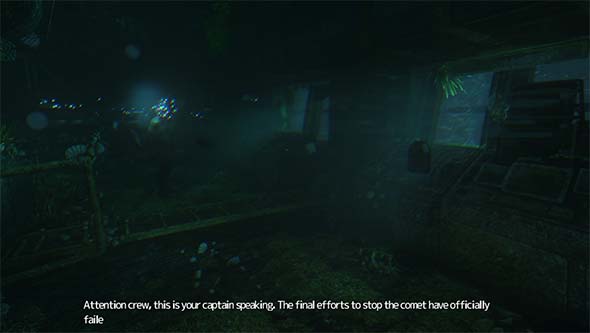
Monsters sometimes appear in where you get important story bits to incentivize you to not just walk away.
Monster encounters do still feel very un-threatening for the first half of the game. The first few monster encounters even seemed scripted to catch the player. This was possibly done in order to tutorialize the game's healing mechanic, but it also serves to desensitize the player to the monster and the threat of death right out of the gate. Unlike The Dark Descent, you don't start out terrified and cowering in fear from a mysterious and ominous enemy that can kill you in a heartbeat, and then gradually grow desensitized to it as it kills you and you realize that the consequences of death are pretty minor. Instead, you're taught right from the start that dying is virtually consequence-free, and that it isn't really worth the time and effort to try to avoid the monster by sneaking around, or to try to hide from it. The monster's appearance is never even surprising either. There's a screen-tearing effect and static noises to indicate that the monster is near, even if you can't see him. It's the same kind of effect that Slenderman played with. So even while you're walking around, you never feel the need to peek around corners or glance over your shoulder to make sure nothing's stalking you. This kills any potential for horror that the game might have been able to establish... [More]
fe37316f-173d-463b-a214-2d614c72dff2|1|5.0
Tags:Soma, Frictional Games, Steam, indie gaming, mind, consciousness, mind-body problem, transhumanism, robot, artificial intelligence, ocean, abyss, Amnesia: the Dark Descent, Amnesia: a Machine for Pigs, The Swapper, science fiction, Philip K. Dick, Turing Test, ludonarrative
Earlier this year, it was announced that CBS will be creating a new Star Trek television series to celebrate the franchise's 50-year anniversary. Very little was known about the series except that it would be under the leadership of Bryan Fuller (a former Deep Space Nine staff writer), and that it would premiere on CBS's All-Access streaming service. As one of Fuller's first actions, he made a lot of Trek fans very excited by hiring Wrath of Khan and Undiscovered Country director Nicholas Meyer to be the chief writer of the new series. These happen to be my two favorite Star Trek movies (with Undiscovered Country getting better each time I see it).
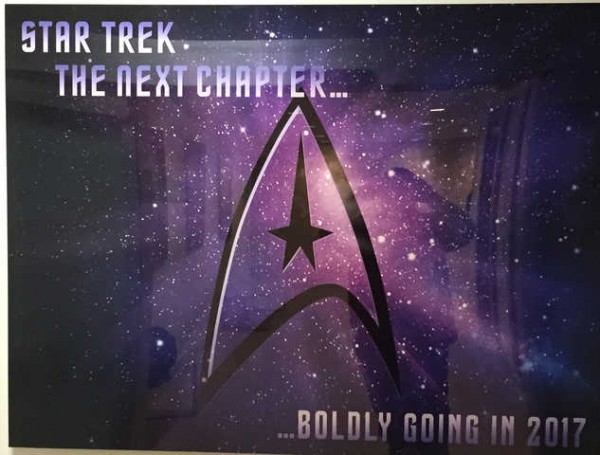
A leaked poster for the new Star Trek series.
The biggest questions were when would the series take place, and what would it be about. Many of the previous pitches for show ideas that I had read sounded terrible. Many sounded like really cheap fan-fiction concepts. Like the idea of a series about James Kirk's descendant becoming captain of a new Enterprise to save the Federation from an extra-galactic alien threat. Boy, that one sounded dumb.
I avoided talking about the topic of CBS's new series up till now because I wanted to reserve judgement until something more concrete about the show was announced. Well now, something has, and it has me very excited. According to rumors, Fuller and Meyers are producing a seasonal anthology series similar to the popular American Horror Story. This means that each season would contain its own self-contained, independent storyline that could explore any time period, characters, locations, or concepts from the entire series' canon. I've been saying for years that Star Trek would be a great fit for an anthology series. The canon is large and expansive enough that focusing it on a singular time, place, and characters feels very restraining and limits the types of stories that can be told.
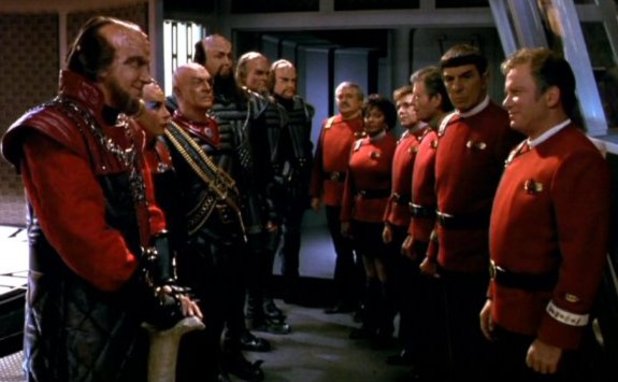
The first season will supposedly take place sometime after the events of The Undiscovered Country.
Of course, when I started pitching that idea to friends and anyone who would listen (don't know why I never blogged about it...), I hadn't conceived of a seasonal anthology. I was thinking more along the lines of a true anthology similar to The Twilight Zone or The Outer Limits. ... [More]
445daf46-75b8-4660-8c40-e9f50b68c654|1|5.0
Tags:Star Trek, CBS, all access, Bryan Fuller, Nicholas Meyer, anthology, American Horror Story, Star Trek II: the Wrath of Khan, Star Trek VI: the Undiscovered Country, Star Trek: Deep Space Nine, the Outer Limits, the Twilight Zone, science fiction, seasonal anthology, mirror universe
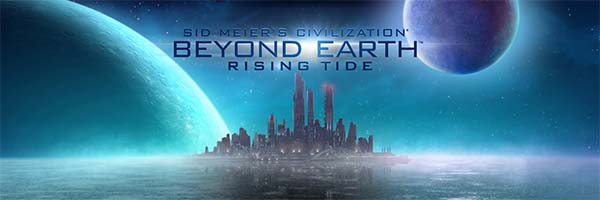
I'm starting to feel like quite the prognosticator. Earlier this year, I started tossing around the idea of Nomadic civilizations for future Civ games. Around the same time, Creative Assembly announced Attila: Total War. They had apparently come up with almost the same idea independently at the same time. Well, now the teams at Firaxis have also implemented a variation of my idea for their new expansion to Beyond Earth, called Rising Tide.
This expansion seeks to remedy several of the core complaints with the Beyond Earth game. In my original review for Beyond Earth, my two biggest complaints were that the game and its leaders lacked the personality and variety of Civilization V, and that it just didn't feel futuristic enough. Both of these complaints ended up being the major focus of the first expansion, which definitely helps to make Beyond Earth stand out a little bit from its more realistic counterpart.
So we sailed up to the sun, till we found a sea of green
One of Beyond Earth's biggest failings was its lack of creativity in using its futuristic setting to innovate gameplay. The game felt very much like a reskin of Civ V rather than a new game. A big part of this was that the map posed many of the same sorts of restrictions on players that the Civ V map did: mountains, canyons, and oceans were all obstacles either impassable by units or uncolonizable by cities.
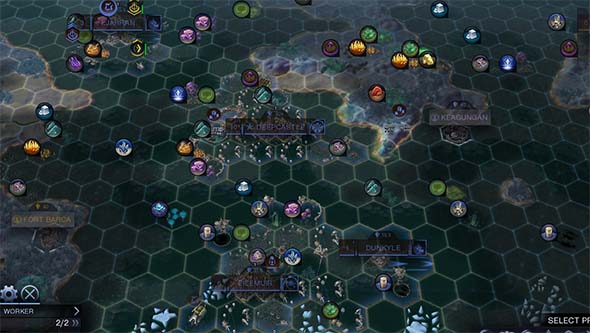
Aquatic cities and civilizations help to separate Beyond Earth's futuristic setting from Civilization's historical roots.
Well now one of those restrictions has been lifted, and civilizations can build floating cities in the oceans. Such cities can even be moved in order to claim new tiles or to act as mobile military bases. This opens up some interesting (and sometimes silly) new strategic possibilities, but the whole mechanic feels a bit contrived to me. Moveable cities is something that I think can work very well in Civilization, but I just don't feel that Firaxis gave us much reason to ever need to move cities in this game. My proposal for nomadic civilizations was two fold: such a faction could mobilize its entire civilization right up to an enemy's borders during war; and it could also move in response to changing map conditions (migrating animal resources or climate change) during peace. Beyond Earth hits that first point by turning cities into massive aircraft carriers, but there aren't any mechanics in place to make the map a factor.
Fish and other harvestable sea creatures don't migrate, and other resources don't move. So if you aren't using your aquatic cities as mobile military bases, then there's never any real need to move them. And if you're not playing as the North Sea Alliance faction, then the cost to move a city can feel prohibitively expensive. The people at Firaxis seemed to have recognized this, and so they made it so that aquatic cities don't grow their borders based on culture. Instead, you must either buy new tiles or move the city itself in order to acquire adjacent tiles. But since moving takes valuable production time away from the city, I rarely find myself moving a city, and instead I just buy any tiles that I want.
Aquatic cities can be moved, and can act as mobile military platforms and aircraft carriers.
There are other pros and cons to aquatic cities, such as health benefits, faster virtue acquisition, and more profitable trade routes. You can also move the cities around to temporarily acquire resources that allow you to build specific resource buildings, but at the cost of possibly temporarily hurting your city's growth or production (and maybe even starving the city if you move away from food-generating tiles). So there's a lot to think about when build an aquatic or nomadic civilization, but it all feels kind of like ad hoc mechanics in order to make the mechanic seem more meaningful than it actually is. That isn't to say that mobile cities is a bad feature in Beyond Earth. It's perfectly functional, and can be fun to play around with. It just feels a little gimmicky.
Just look at the world around you, right here on the ocean floor
It certainly helps that the oceans themselves are a much bigger part of the game. The ocean isn't just divided into coastal tiles and empty ocean anymore. There's a whole host of new aquatic resources, and even the sea floor itself has different features. This definitely provides some incentive and reward to building floating cities, since the ocean can be a rich source of resources. The ocean tiles themselves can even be improved with a variety of new improvements (including basic farms and mines).
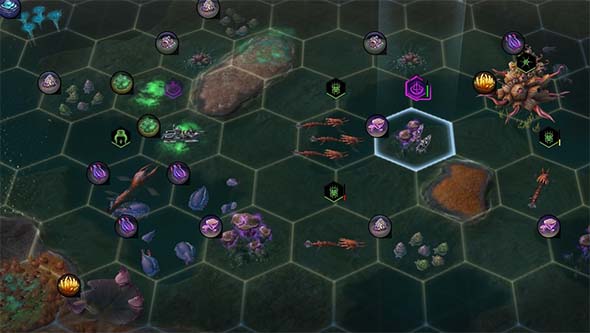
The oceans are alive with life and resources, giving reason to found aquatic cities.
Aliens are also active in the oceans. Sea creatures will build nests (just like their land counterparts), and there's a new alien creature called Hydrocoral that is stationary but which spreads across the ocean surface if left unchecked. Resource pods, artifacts, and quest triggers can all also be found in the ocean. So there's plenty to do in the water now, oceans feel more like a genuine part of the map rather than just dead space between continents, and the variety of features and resources in the ocean helps to make the world look more alien.
... [More]
da86c697-6def-4ade-b575-051869e1f38d|2|5.0
Tags:Sid Meier's Civilization, Civilization: Beyond Earth, Civilization: Beyond Earth: Rising Tide, Rising Tide, Firaxis, 2K Games, PC, Steam, strategy, grand strategy, turn-based strategy, science fiction, space, water, aquatic city, nomad, ocean, trench, submarine, diplomacy, affinity, alien, Civilization: Beyond Earth

Since I have some extra time off for this holiday season, I'm trying to go through some of my backlog of shorter indie Steam games in between bouts of Cities: Skylines and Beyond Earth: Rising Tide. One such game is Facepalm Games' 2013's sci-fi indie hit, The Swapper, which I picked up in a Steam sale like a year ago. The game has also been ported to many consoles, including the PS3, PS4, Vita, XBox One, and Wii U, and the ports were developed by Curve Digital.
Making my clones do the deadly work
The Swapper seems to owe a lot to Valve's mega-hit Portal. Both games' central mechanics revolve around the player character using a futuristic non-weaponized gun (with 2 settings) to solve platforming puzzles and explore an environment. Portal is in full 3-D, whereas The Swapper is a more traditional 2-D side-scroller. The bigger difference however, is that the gun of The Swapper doesn't fire portable wormholes; instead, it allows the player character to instantly create clones of herself, and to swap her consciousness into one of the clones. Once created, these copies move in tandem with the copy that is currently being controlled by the player. The key to the puzzles is to maneuver yourself so that your clones can reach otherwise inaccessible areas or activate switches.
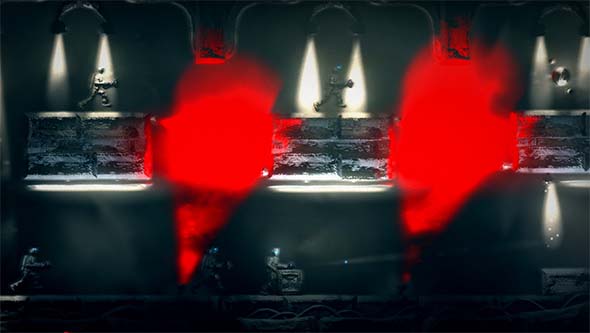
All your clones move in synchronization, making relative spacing very important for solving puzzles.
The space station is laid out in an unbelievable, but serviceable, series of puzzle rooms joined together by modest platforming sections. At first, the platforming between puzzles is interesting because it kept me thinking along the lines of solving puzzles rather than just moving from place to place. But there's a lot of exploration and backtracking, and having to navigate the corridors between puzzle rooms quickly became tedious once using the swapper gun became second nature and automatic. Fortunately, the game provides handy teleporters to allow you to quickly move to key sections of the station, so the backtracking never became as problematic as it could have been.
The puzzles themselves start off fairly simple, requiring that the player simply point the gun and clone herself in order to reach a platform or cross a gap and collect alien orbs that you use to unlock new areas of the space station. The challenge quickly escalates. Soon, obstacles start getting thrown at you, such as colored lights that prevent certain operations of the swapper gun, forcing you to have to find more elaborate ways around the lights in order to reach your destination. You have to start using careful positioning, choreographed movement, gravity, momentum, and inertia in order to successfully solve the puzzles. And all this escalation seems to happen naturally based on the increasing complexity of the levels, rather than through the introduction of new mechanics or controls.
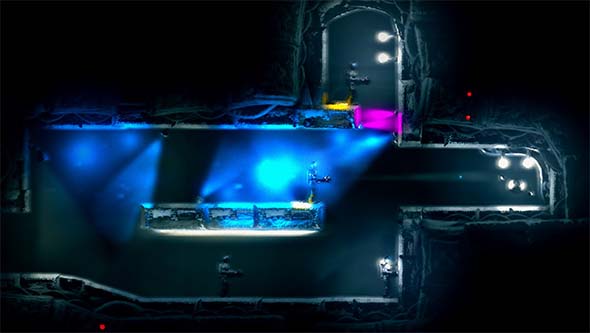
About an hour into the game, I ran into a puzzle that took almost an hour of trial-and-error for me to solve.
About an hour into the game, the difficulty suddenly spiked, and I ran into one puzzle in particular that took me quite a while to figure out. I even had to leave it and come back to it later with a fresh perspective. I thought maybe I was missing some kind of upgrade or needed to learn some technique that the game hadn't tutorialized yet, but that wasn't the case. Eventually, I figured it out, and the solution seemed head-smacking obvious, but I probably spent a good hour on that one puzzle (approximately half of my time with the game, up to that point).
There are also some other sci-fi mechanics such as the occasional zero-g spacewalk, gravity inversion (allowing you to "fall" up and walk on the ceilings), and so on. These all flow fairly seamlessly into the game; although, I did feel that the gravity inversion felt a little unnecessary when it was introduced. After all, the game teaches you fairly early how to use the swapper gun to effectively fly by repeatedly swapping to clones created above you. This "flying", is, however, limited by the number of clones that you can create, and it's still subject to being blocked by colored lights. So gravity inversion felt superficial when introduced as a means of navigating the station. Once the gravity inversion was introduced into the puzzles, though, I recognized its value.
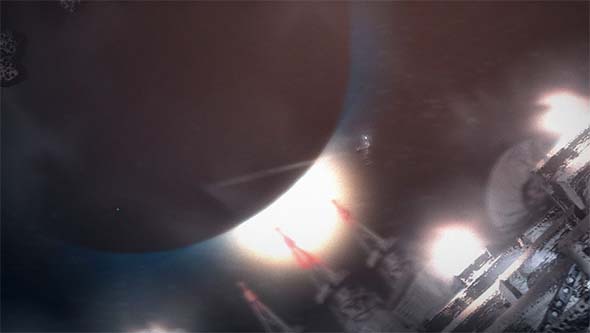
You'll also perform the occasional zero-G spacewalk or invert gravity.
Any problems that I had in solving a puzzle were purely intellectual. Every control and mechanic is intuitive and comfortable, movement is responsive, and I almost never struggled with making the character do what I wanted her to do. All in all, the game plays near-perfectly. The puzzles are appropriately challenging; although, the exploratory nature of the game means that difficulty can wobble back and forth a bit depending on which puzzle rooms you reach first... [More]
8b3a77a8-4dc7-429b-b9ce-44d928af9f86|2|5.0
Tags:The Swapper, Steam, indie gaming, puzzle, platformer, science fiction, cloning, consciousness, identity, self, brain, mind, mind-body problem, space, sentient, alien, Portal

I dropped the ball on this one. I often criticize Hollywood for not being willing to make genuine, hard science fiction movies anymore, and I begroan the continued bastardization of my beloved Star Trek and the dumbed down action flicks that Hollywood dared to put the "Star Trek" title on. The studios say that science fiction don't make enough money. Apologists say that casual audiences are too dumb and impatient to sit through any kind of slow-developing, cerebral movie. Ironically enough (despite my own frequent cynicism) I think both these apologetics are too cynical and don't give audiences enough credit. I firmly believe that if the studios make a good movie, the audiences will go see it, especially if it's properly marketed.
So when a thoughtful, science fiction movie like The Martian comes out, I try to make a point of spending my money to see it in order to show my support for the continued development of the genre. I made a point of seeing Gravity, despite that movie appearing to be little more than space destruction porn and iMax eye candy. I also made sure that I saw last year's Interstellar. And both of the Planet of the Apes reboots have been surprisingly excellent. Unfortunately, I lost track of the release date of The Martian and missed seeing it on opening weekend (one of Hollywood's biggest metrics of a movie's success). I also wasn't able to see it the week after, or the week after that due to my weekends being consistently busy. It was over a month before I finally put my foot down and said "I'm seeing this movie now! No more delay!". And then I went and saw it twice in that same weekend.
Fortunately, the rest of the country vindicated me by heaping dump trucks full of praise on the movie and putting their butts in the theater seats to keep The Martian at the number 1 spot in the box office for almost the entire month of October (only briefly falling to number 2 for one week behind Goosebumps - really?). It finally took an upteenth sequel to a beloved franchise to topple The Martian when Spectre (which I also saw this weekend) held the top spot for two weeks in a row. The movie itself is earning Oscar buzz, and Matt Damon seems to be the current favorite for "Best Actor". So there you have it, Hollywood: make a good sci-fi movie, and they will come, and they will love it.

Matt Damon's character is charming and easily has the audience rooting for him against all odds.
And the movie is absolutely fantastic! It's ambitions are closer to Apollo 13 than to 2001: A Space Odyssey. It's a very believable, down-to-earth, science fiction film, the events of which feel like they could happen tomorrow. Matt Damon's performance is absolutely charming as a NASA astronaut stranded on Mars and presumed dead when his team is forced to evac due to a violent sandstorm... [More]
07512981-d696-4a06-9ee6-d639a967a128|0|.0
Tags:The Martian, Matt Damon, Ridley Scott, science fiction, Mars, space, NASA, astronaut, Ares, Pathfinder, optimism, Oscar
|

| 12 | | | | | | | 60 | | 11 | | | | | | | 55 | | 10 | | | | | | | 50 | | 09 | | | | | | | 45 | | 08 | | | | | | | 40 | | 07 | | | | | | | 35 | | 06 | | | | | | | 30 | | 05 | | | | | | | 25 | | 04 | | | | | | | 20 | | 03 | | | | | | | 15 | | 02 | | | | | | | 10 | | 01 | | | | | | | 05 |
|